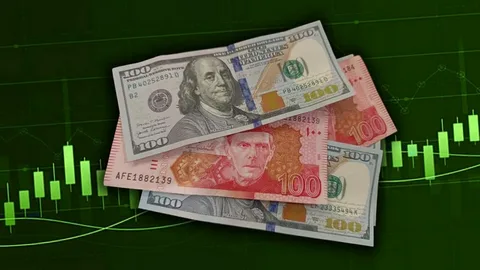The Pakistani rupee (PKR) has always been a subject of interest for businesses, investors, and the general public. With global economic shifts, domestic challenges, and policy changes, the value of 1 USD to PKR has become a crucial indicator of the country’s financial health. Today, the currency market in Pakistan reflects not just the balance between imports and exports but also the impact of international oil prices, remittances, inflation, and government decisions. Understanding today’s exchange rate status helps individuals and businesses make informed financial choices.
Importance of Tracking USD to PKR Exchange Rate
The 1 USD to PKR rate is more than just a number. It affects multiple layers of the economy, from the price of daily essentials to the profits of large-scale exporters. A strong dollar against the rupee means costlier imports, higher fuel prices, and increased inflation for ordinary citizens. On the other hand, exporters and overseas Pakistanis sending remittances often benefit from a weaker rupee because they receive more local currency in return.
Monitoring the daily status of the exchange rate provides clarity for:
- Businesses making import/export decisions.
- Investors assessing foreign currency reserves and stock market reactions.
- Ordinary citizens planning travel, education abroad, or international shopping.
- Policymakers aiming to balance the economy with appropriate fiscal and monetary measures.
Factors Influencing the PKR Against the USD
Several internal and external factors drive the daily fluctuation of the rupee:
1. Inflation and Monetary Policy
High inflation often reduces the purchasing power of the rupee, leading to its depreciation. The central bank adjusts interest rates to stabilize the currency, but these measures sometimes take time to show results.
2. Global Oil Prices
Pakistan is heavily dependent on imported oil. A surge in oil prices directly increases the demand for dollars, putting pressure on the rupee. Conversely, a decline in oil prices can provide some relief.
3. Remittances
Overseas Pakistanis play a vital role in stabilizing the rupee. An increase in remittances boosts the dollar inflow, helping to strengthen foreign exchange reserves and reduce pressure on the currency.
4. Political and Economic Stability
Uncertainty in political leadership or inconsistent economic policies often creates panic in the currency market. Investors demand more dollars as a safe haven, causing the rupee to weaken.
5. International Debt and IMF Programs
Pakistan’s reliance on external loans also influences the rupee. Whenever repayment obligations rise or IMF program conditions tighten, the pressure on PKR becomes visible.
Today’s 1 USD to PKR Status
Currently, the 1 USD to PKR rate reflects both global market trends and local economic conditions. The rupee has seen periods of depreciation due to high imports, dwindling reserves, and inflationary pressures. However, measures by the State Bank of Pakistan, such as strict monitoring of currency smuggling, crackdown on illegal dollar trade, and support from international allies, have helped bring some stability.
For businesses and individuals, the real-time rate has become essential. Even minor fluctuations in the exchange rate directly affect fuel prices, food costs, and the overall cost of living.
Impact on Different Sectors
1. Importers and Exporters
Importers of machinery, electronics, and petroleum products face rising costs when the rupee weakens. On the other hand, exporters of textiles, rice, and IT services benefit because they earn more rupees for every dollar received.
2. Stock Market
A fluctuating dollar value often triggers volatility in Pakistan’s stock exchange. Investors carefully track exchange rates before making big moves in equities.
3. Ordinary Citizens
The most visible impact of the rupee’s status is on everyday expenses. From grocery bills to transportation, everything becomes costlier when the rupee loses ground. Students studying abroad also face challenges as tuition fees rise in PKR terms.
4. Banking and Finance
Banks play a central role in facilitating trade and remittances. Fluctuations in currency also affect the lending rates, profit margins, and customer trust in financial institutions.
Future Outlook of USD to PKR
Analysts predict that the rupee will continue to face challenges due to Pakistan’s trade deficit, reliance on external borrowing, and inflationary pressures. However, improved remittances, potential foreign investment, and government reforms could help provide stability.
Key areas to watch include:
- Negotiations with the IMF for economic relief.
- Political stability, which could boost investor confidence.
- Global economic conditions, especially US interest rate policies and oil prices.
Conclusion
The Pakistan currency market is dynamic and influenced by both domestic and international factors. Today’s status of 1 USD to PKR is not merely about exchange rates but a mirror reflecting Pakistan’s broader economic health. For businesses, investors, and ordinary citizens, staying updated with these fluctuations is crucial to making informed financial decisions.
Whether the rupee strengthens or weakens, the coming months will depend on how effectively Pakistan manages its economic challenges and capitalizes on global opportunities. One thing remains certain: the USD to PKR rate will continue to be one of the most closely watched indicators of Pakistan’s financial landscape.



